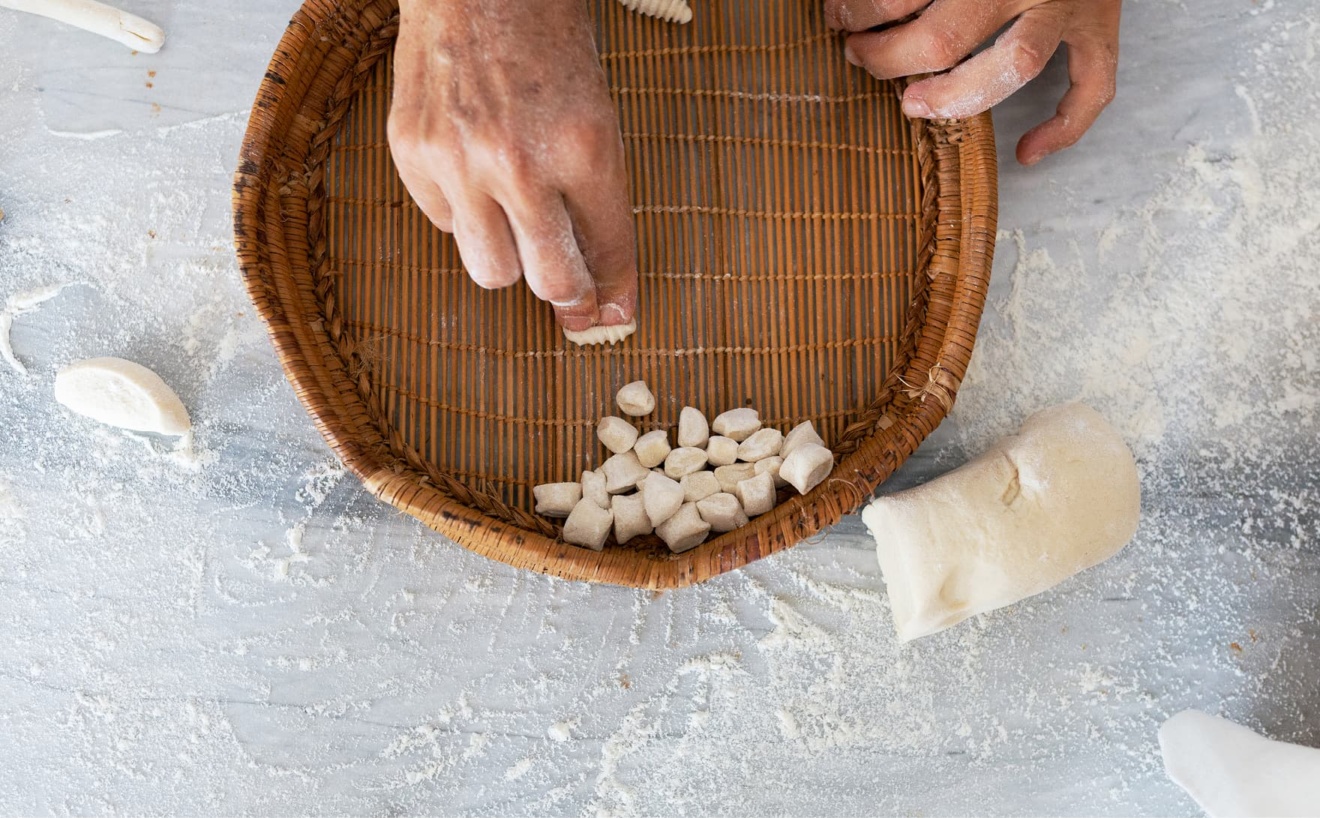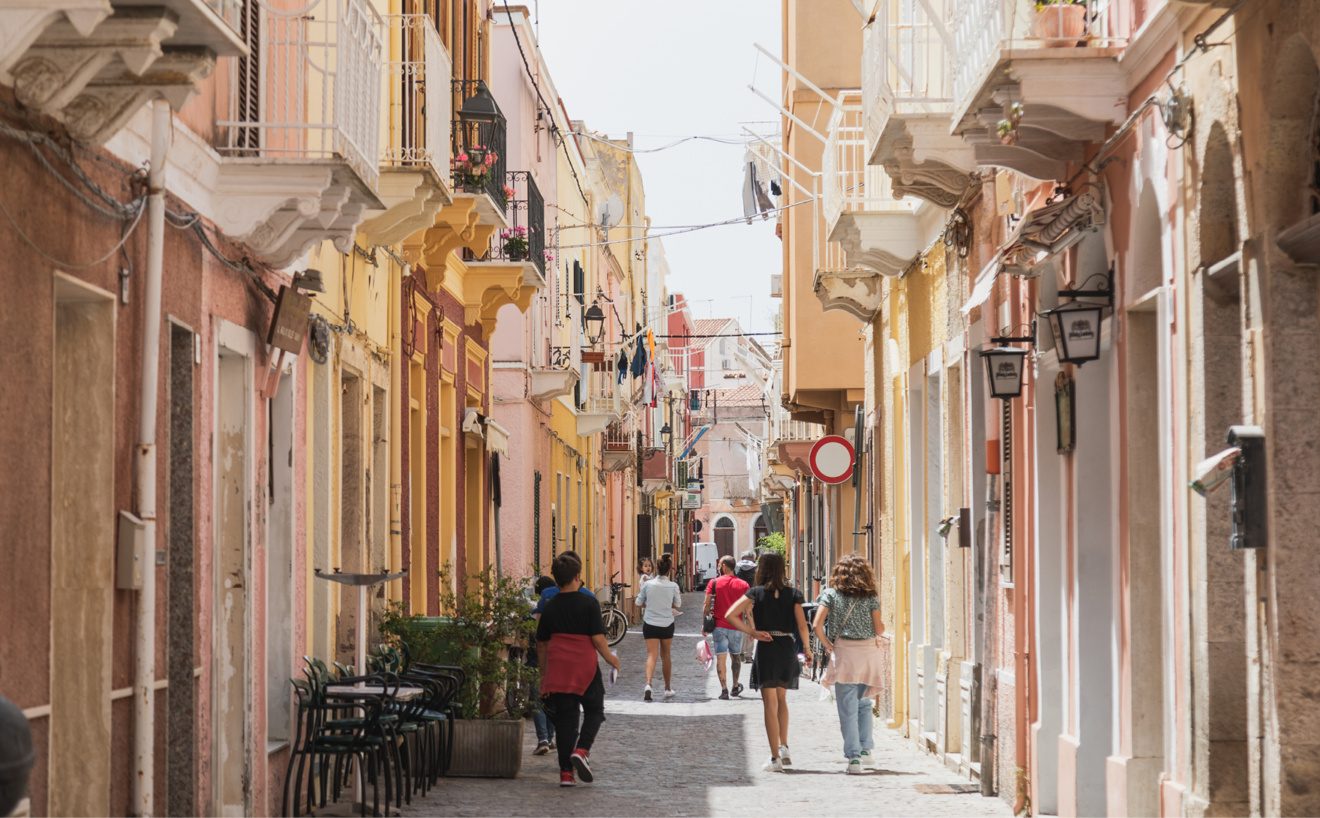A brief handbook for the polyglot tourist:
Ôscì: yes
Ônù: no
Ué: hello, more familiar and translatable as: ciao.
Se vedémmu: goodbye. In the morning, we can also use bungiurnu â matin, in the evening buñasàia. Finally, to say good night: buñanötte.
To say thank you: gràssie. To say your welcome: figüte.
Scüza u destürbu: sorry to disturb you.
To introduce yourself
Me ciammu Giovanni: my name is John.
Sun de Rumma: I’m from Rome.
Cumme ti stè? How are you?
Other useful expressions
To ask someone for his phone number or e-mail address: póssu avài u tó nümeru/a tó e-mail?
Se vedémmu duman: see you tomorrow. To say see you next week, you say: st’otra setemaña. After a convivial, celebratory or festive moment in ‘otra vótta mégiu.
To ask a question, adverbs and formulas
Unde sun i traghétti? or und’ en i traghétti? Where is the embarkation point?
Cusse l’è u Sparmadù? What is the Sparmadù?
Pài ciàzze? To the beaches?
Unde ti vè? Where are you going?
Chi t’é? Who are you?
Spiéghime unde s’aferme u pullman? Would you explain to me where the bus stop is?
Commonly used phrases for travelling
In bigéttu pe Câdesédda pe piâxài: a ticket to Calasetta, please.
Que u l’è u próscimu traghéttu? When is the next departure?
À che ua u l’è u traghéttu pe Portuscüzu? What time is the ferry to Portoscuso?
Unde s’acattan i bigétti? Where can I buy tickets?
Unde l’afitu ‘na biciclétta? Where can I rent a bicycle?
At the hotel, at the restaurant, at the bar
Ghe n’è stànsie vacanti? Do you have vacant rooms?
Ôriè ‘na stànsia pe quattru persuñe: I would like to book a room for 4 people.
Ôriè in apartamentu pe séi giurni: I would like to rent a flat for 6 days.
Che risturante ti me cunséggi chi à vixin? What restaurants do you recommend nearby?
Ôriè prenutò duì pósti pài növ’ue: I would like to reserve a table for 2 people at 21.00.
Und’ u l’è u bagnu? Excuse me, where is the bathroom?
Ina bira pe piâxài: a beer, please.
For a glass of wine/water: in góttu de vin/ègua.
U cuntu, pe piâxài: the bill, please. For shopping
Unde a l’è a pósta? How can I get to the post office?
Ina bütéga de scorpe? I’d like to buy some shoes.
Póssu pagò cua corta / cui dinè de papé? Do you accept credit cards/cash?
Quant’u vò? How much does it cost?
Andrea Luxoro was born in Carloforte, where he still lives and works. He studied in Cagliari and graduated in anthropology from the Faculty of Literature with a thesis on the “Workers of the sea of Carloforte”. Together with a group of local scholars, he founded the Saphyrina Cultural Association and the Asuciasiun cultürole tabarchiña, which enhance and promote the culture, history and language of the Tabarka communities in the Mediterranean. He curates the “Pocomabuono” literary review and founded the Carloforte Book Fair. He coordinates the Sportello Linguistico Tabarchino of Carloforte, is scientific advisor for the Polo della lingua tabarchina and promotes cultural initiatives on many fronts. You can always find him prepared and available at the newsstand “Dai giurnoli in sciâ ciassa” (Piazza Repubblica).


